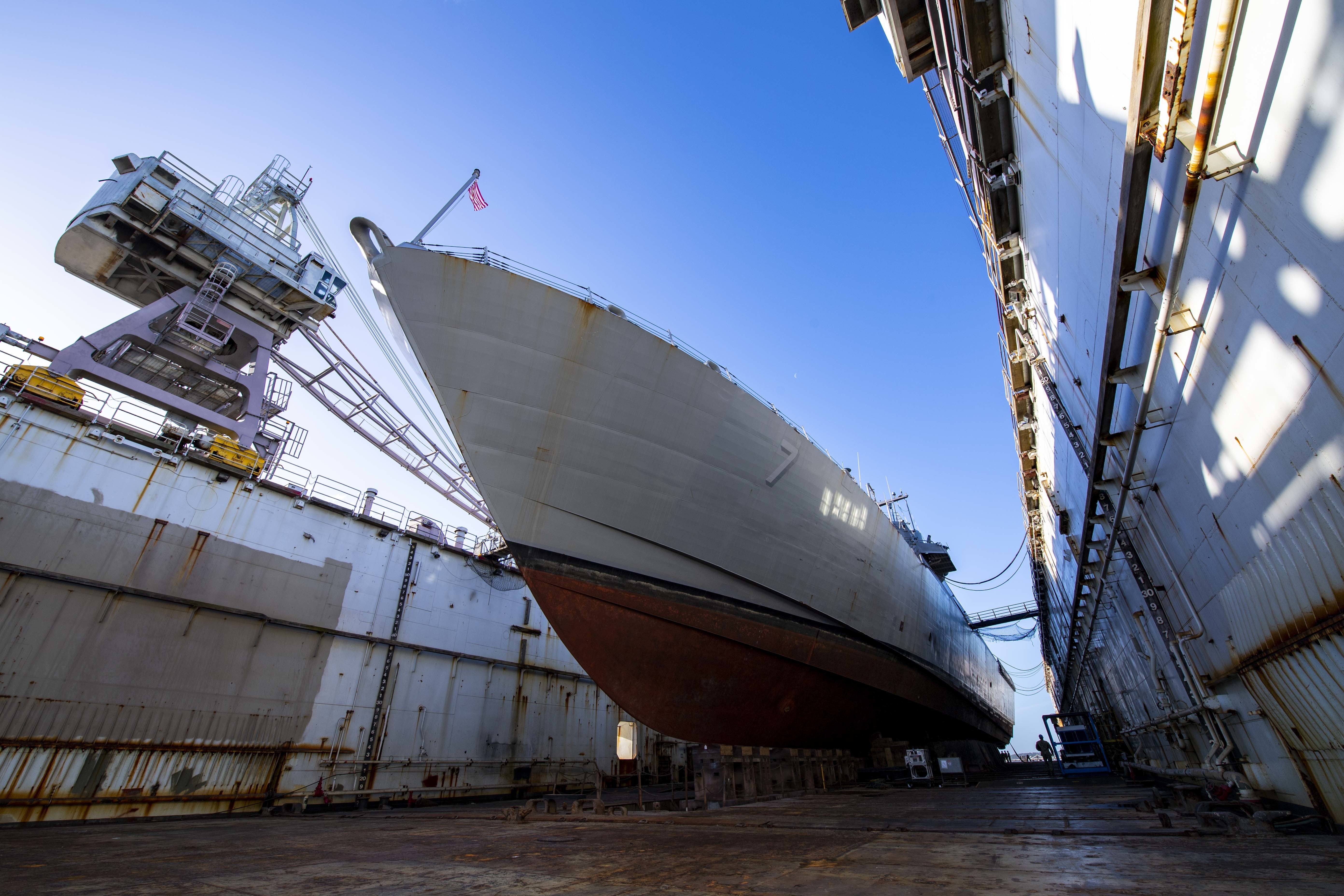
This is the second of a two-part series on the current state of the Littoral Combat Ship program.
This post has been updated to note that the Mk 48 Mod II Gun Weapon Control System will upgrade the current 57mm gun on the LCS.
WASHINGTON NAVY YARD – With both variants of the Littoral Combat Ship in serial production at two yards and those ships now kicking off an enduring multi-ship overseas presence, the Navy is turning its focus to increasing the lethality and survivability of the hulls.
In the near term, the Naval Strike Missile is being installed on all LCSs as fast as the Navy can support, giving each ship an offensive punch regardless of what mission package it deploys with.
Into the early 2020s, the Navy will focus on a two-phase survivability and lethality upgrade plan, which will add electronic warfare capabilities, anti-missile decoys and eventually, perhaps, even laser guns or other advanced systems.
And a rush of upcoming developmental and operational tests on mission package systems should help get the three packages – surface warfare, mine countermeasures and anti-submarine warfare – across the finish line for the fleet to use.
Naval Strike Missile
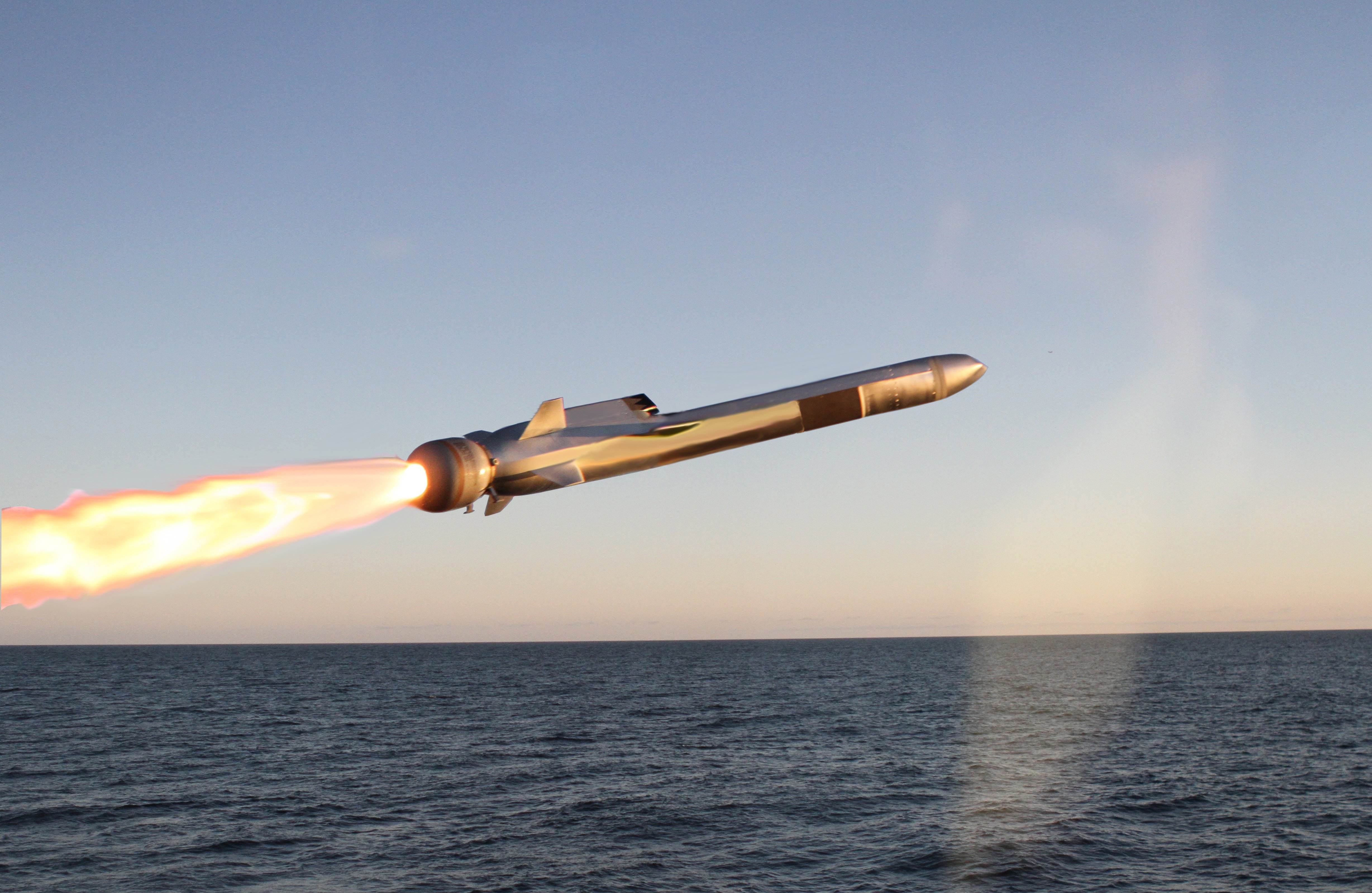
USS Gabrielle Giffords (LCS-10) underwent a backfit process so when it deployed earlier this week with the Naval Strike Missile, the small combatant left with more ability to target enemy ships.
Rear Adm. Casey Moton, the program executive officer for unmanned and small combatants, told USNI News in a recent interview at Navy Yard that LCSs would get a permanent Naval Strike Missile launcher installation as they go through their next maintenance availabilities. The process of backfitting every LCS with the missile launcher will take a couple years, he said.
Starting with LCS-27 and follow ships, the hulls will be built from the start with the space, weight and power reserved for the missile.
“We’re going to very quickly see those numbers go up, the ships having that capability,” Moton said.
“That’s a game-changer for LCS: they still have their mission, they still have their focused mission and all the things that they’re going to do in the surface warfare world and in ASW and MCM. But now – the surface force is doing a great job talking about that – now, every LCS that’s out there can’t be ignored.”
Having the over-the-horizon missile aboard deployed LCSs “immensely complicates any potential adversary’s fighting problem,” he added.
Commander of Naval Surface Forces Vice Adm. Richard Brown agrees, calling the missile “phenomenal.”
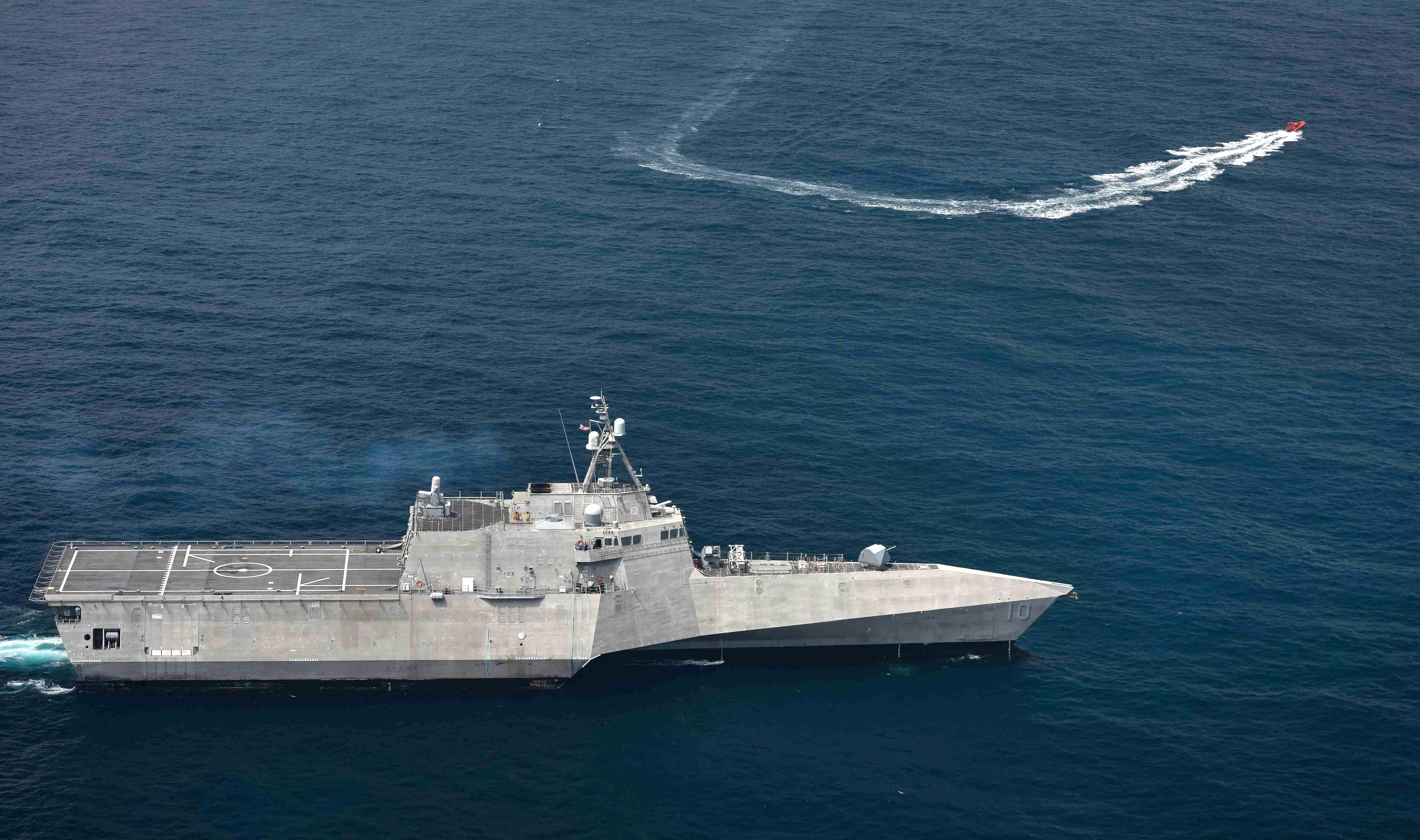
“The fact of the matter is, LCS is going to have an offensive punch at range. And that starts with Gabrielle Giffords, and that will be true in the years to come – which then complicates any enemy’s targeting because, whereas they really just had to figure out where the aircraft carrier was, now in conjunction with everything we’re doing, not just in LCS but in the cruisers and destroyers, any potential adversary has to worry about where all the ships are because of the reach of the weapons systems we’re putting on them.”
Brown, in an interview, said the insertion of the Naval Strike Missile has been a model for how to quickly add capability to the fleet. In short order, Naval Sea Systems Command conducted material certifications, a schoolhouse training program was put together for the LCS crews, and the Afloat Training Group did a full cruise missile tactical qualification on both Giffords’ blue and gold crews.
“We accelerated the Naval Strike Missile, but we weren’t just going to slap it on the ship and send it out there without the proper training,” Brown said, calling what was done a model for other rapid capability insertions, including the surface-to-surface missile module in the surface warfare mission package.
The Freedom-variant LCSs on the East Coast are not yet ready to incorporate the NSM on upcoming deployers, as separate testing and verification has to be done on the two LCS hull types.
Lethality and Survivability Upgrades
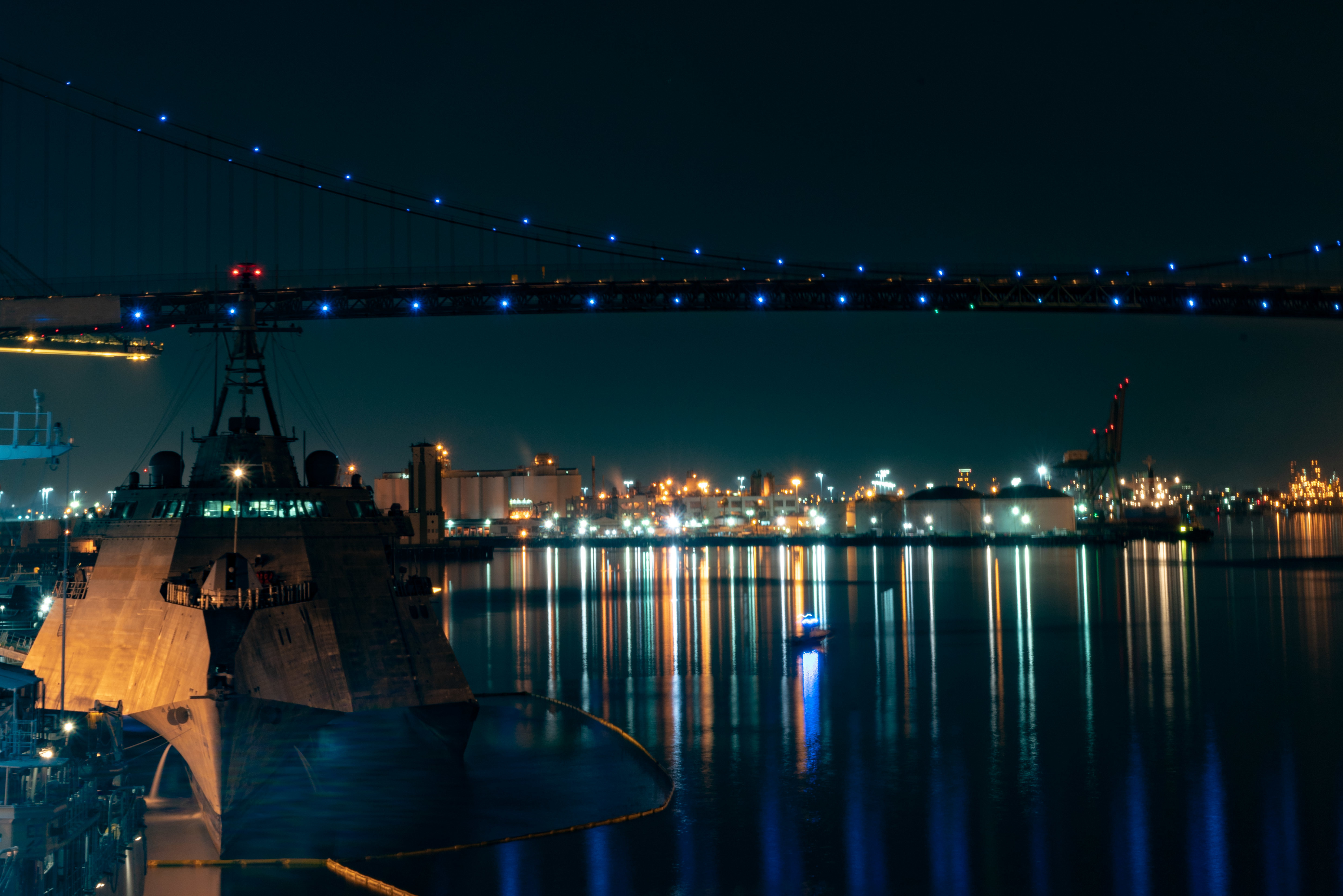
In Fiscal Year 2022 – or sooner – the first LCSs will begin going through an upgrade process that will address longstanding calls to up-gun and up-armor the ship class.
Brown said the current plan calls for one Independence-variant ship in San Diego and one Freedom-variant ship in Mayport, Fla., to undergo upgrades in FY 2022, and then two a year per coast after that.
However, Lockheed Martin Vice President and General Manager of Small Combatants and Ship Systems Joe DePietro told USNI News in a recent phone interview that there was some talk of trying to pull the schedule to the left, in an effort to get at least partial upgrades completed before some of the LCSs deploy. He said his company is studying a few options for the Navy to consider.
DePietro said the overall L&S effort includes the over-the-horizon missile (OTH), Surface Electronic Warfare Improvement Program (SEWIP), the Nulka MK 53 Decoy Launching System, improvements to the 57mm gun by installing the Mk 48 Mod II Gun Weapon Control System and more – as well as shifting the Independence-variant ships away from their current total ship computing environment and to the COMBATSS-21 Aegis-based combat system that the Freedom-variant already runs.
If this first phase of upgrades were all done at once, it would involve a more intrusive maintenance availability, but the upgrades would be done in an integrated way.
The Navy has already decided the Naval Strike Missile OTH would be installed on a quicker timeline on some ships in an unintegrated fashion, and DePietro said that SEWIP and Nulka too could be installed early in a “pretty straightforward” and short maintenance availability on the Freedom-variant ships due to existing integration between all the Lockheed-made systems. The company is providing the Navy more information on what the range of options may look like, and how much capability could be installed early versus why it might make sense to wait for a single, comprehensive upgrade.
Similarly, Lockheed is also studying a range of options for putting the new COMBATSS-21 on the Independence-variant ships – from bringing on a couple boxes that fit inside a hula hoop that contain a virtualized combat system that could be run on the existing ship consoles, to a rip-out of the current consoles and replacing them with the same hardware and software from the Freedom-variant.
DePietro said Aegis is becoming more hardware-agnostic every day and that the virtualized system option would cost less, but the console-replacement option might let the Navy cross-deck sailors between the two variants, which cannot be done today.
Beyond these phase 1 upgrades, early phase 2 talks are looking at “everything from radar (upgrades) to directed energy to the Evolved SeaSparrow Missile or [Standard Missile]-2 via [vertical launching system],” he said.
Overall, he said the upgrade effort is moving the single-mission LCSs – where nearly all capability resided in the mission package – into more of a multi-warfare ship.
“As you get to L&S, you’re starting to see that capability go beyond where the core combat system is not just doing self-defense, it’s now augmenting the capabilities of the mission package. So when it was originally designed … those core systems would do self-defense, they would do communications, they would do basic husbandry. Now you’re going to have things like the over-the-horizon missile and greater capability with some of the other radar and EW systems; you’re going to create more of an asset in a multi-mission capability and really be able to do more, even when the SUW package is on there or the ASW,” DePietro said.
“I mean, think about what you get from having an NSM and then a Longbow Hellfire, and then a 57mm gun and then a 30mm gun and a helicopter that can reach around all of that. From a layered defense of SUW, that’s more pound for the punch than you’re ever going to get out of a DDG-51.”
Moton said preparations at NAVSEA are proceeding even amid some uncertainty about the timeline, which should become clearer as the Navy works through its 2021 budget request that comes out in February. Brown said he’d decide by the end of September which hulls will be among the first to be upgraded and what that upgrade plan might look like.
Surface Warfare Mission Package
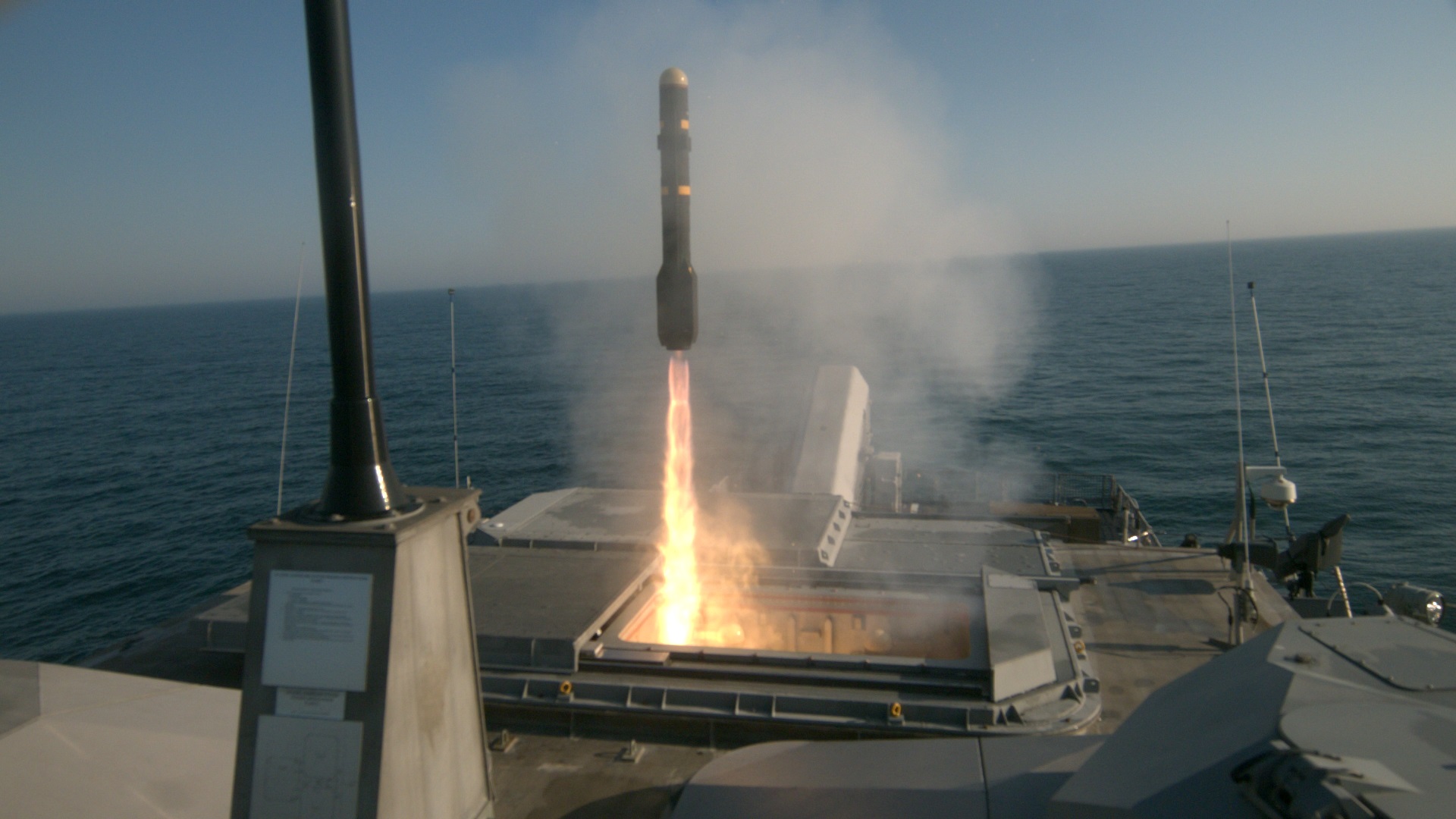
conducted a live-fire missile exercise off the coast of Virginia May 11, firing four longbow hellfire missiles that successfully struck fast inshore attack craft targets. US Navy photo.
Moton, who previously served as the LCS mission package program manager from 2014 to 2016 and now is back to lead the entire PEO, said the surface warfare package is nearly complete.
The surface-to-surface missile module, which is the Longbow Hellfire anti-surface missile adapted to be vertically launched from a ship, will go out on USS Detroit (LCS-7) on its first deployment following a rapid integration process into the mission package.
“We did testing earlier this year, the [operational] testing – 79 missile shots, I think our success was extremely high, 71 shots I believe – so that went really well. So I’m excited. That’s a counter-[fast attack craft] capability like we don’t have on our ships,” he said, referring to the small swarming boat threat that the Navy faces in places like the Persian Gulf.
Separate testing on the Independence-variant hull is happening now, he said, with a structural test fire taking place over the summer.
“Over the last few weeks, we’ve had a ship out on the West Coast that’s been doing non-firing testing, kind of a TRACKEX and passing fire control data and all that. It’s going well. So we go into firing [developmental testing] here in not too long, and then to [operational testing] as well. Things are looking good for Indy variant,” he said.
“I’m excited about that – and there’s a little bit of personal excitement there, too, because two jobs ago when I was PMS 420 (mission module program manager), making sure that that was on track and getting all those plans – because, as you may remember, this was not our first missile for the plans, so getting all that on track for Longbow Hellfire was a lot of work, and the team did a great job executing.”
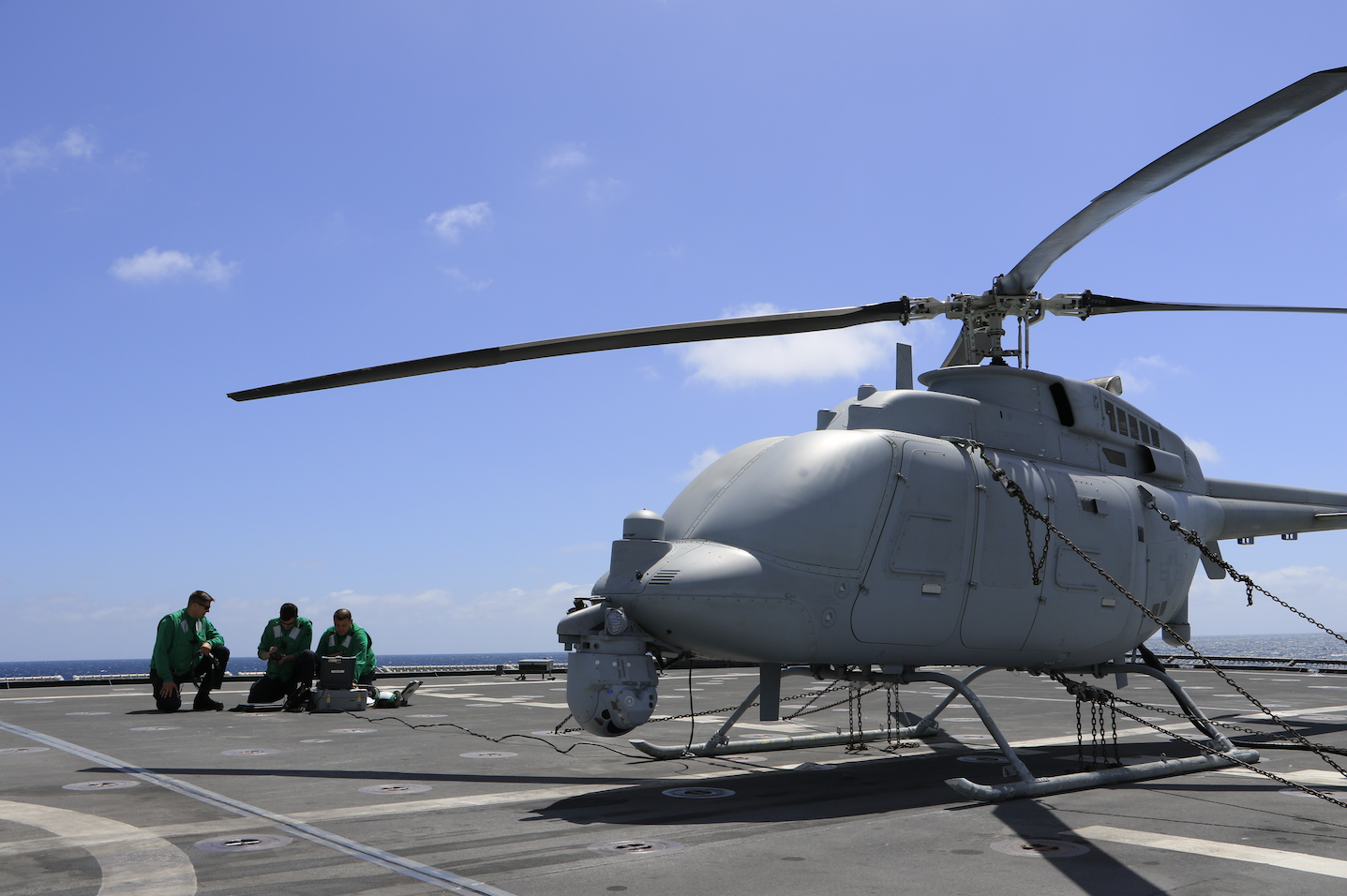
Once the Longbow Hellfire testing wraps up on the Independence-variant ships, the last remaining piece is to continue the transition of MQ-8B Fire Scout unmanned aerial vehicles to the larger MQ-8C Fire Scout. Moton said the LCS has already done a lot of operations with the smaller Fire Scout, but once the whole package comes together – as well as the introduction of the over-the-horizon missile – “you get an unmanned aviation platform up there with the ability now to not only be eyes and ears for LCS but to also be eyes and ears for targeting information for OTH.”
Asked what he’d want people to know about the total capability of the surface warfare package, amid skepticism and criticism that the ship won’t pack enough punch, Moton said, “when the ship has the surface package on board, just the package alone, it brings a better counter-FAC/FIAC capability, better escort capability – not getting operational, but you look around the world, there’s lots of places where that would probably be useful, a couple in particular – it brings a better capability than we have anywhere else. Between the 57 and the 30mm guns and Longbow Hellfire, it is really supreme for that mission,” he said.
“By doing that, it allows us to relieve – always what LCS was in part designed to do, which is as a small combatant, is to relieve the larger combatants and the area [anti-air warfare] force of those missions.”
Mine Countermeasures Mission Package
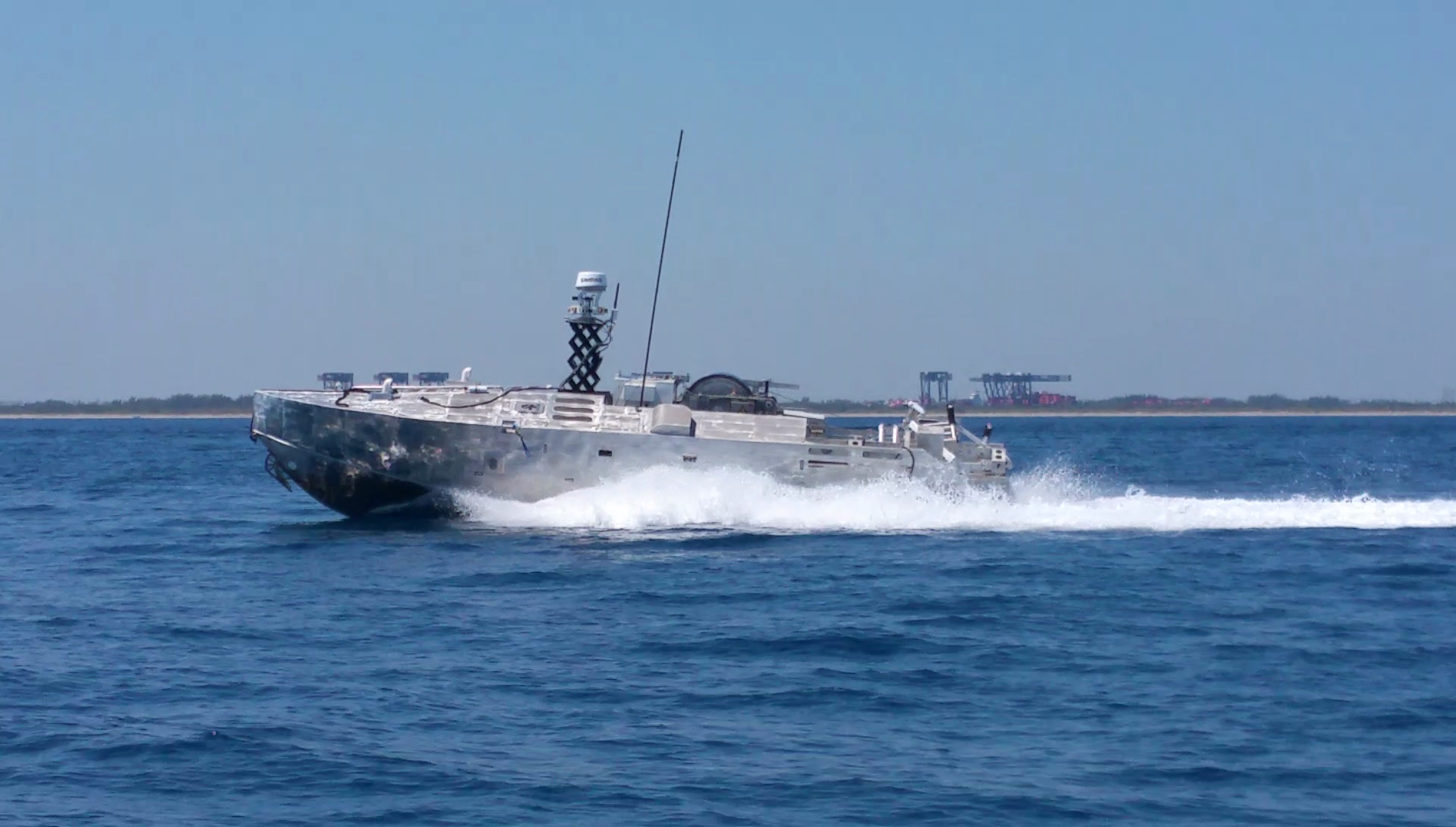
The aviation portion of the MCM package is mostly through testing and beginning to get at-sea runs in exercises and from vessels of opportunity, while the PEO continues to try to get to and through testing on the surface and undersea pieces of gear.
The MCM mission package takes a multi-pronged and multi-domain approach to finding, identifying and neutralizing mines. The Airborne Laser Mine Detection System and the Airborne Mine Neutralization System cover deeper waters, while the Coastal Battlefield Reconnaissance and Analysis (COBRA) works in the beach zone. A Knifefish unmanned underwater vehicle finds and identifies mines in a cluttered seafloor environment, while a Textron-made Common Unmanned Surface Vehicle is being leveraged to both pull an unmanned influence sweep system (UISS) as well as the towed AN/AQS-20C minehunting sonar.
Moton said the airborne pieces are certified to operate off the Independence-variant hulls and will go through Freedom-variant testing soon to ensure there are no integration issues with the hull design.
The aviation pieces are doing well enough that they’ve been used in at-sea tests, such as during this spring’s BALTOPS 2019 NATO exercise in the Baltic Sea. Moton said the feedback was very positive, especially on AMNS. The systems have also been used for vessel of opportunity (VOO) testing, such as aboard British auxiliary ship RFA Mounts Bay (L3008) in Virginia this spring.
Underwater, Knifefish hit Milestone C last week, clearing the way for low-rate initial production to begin.
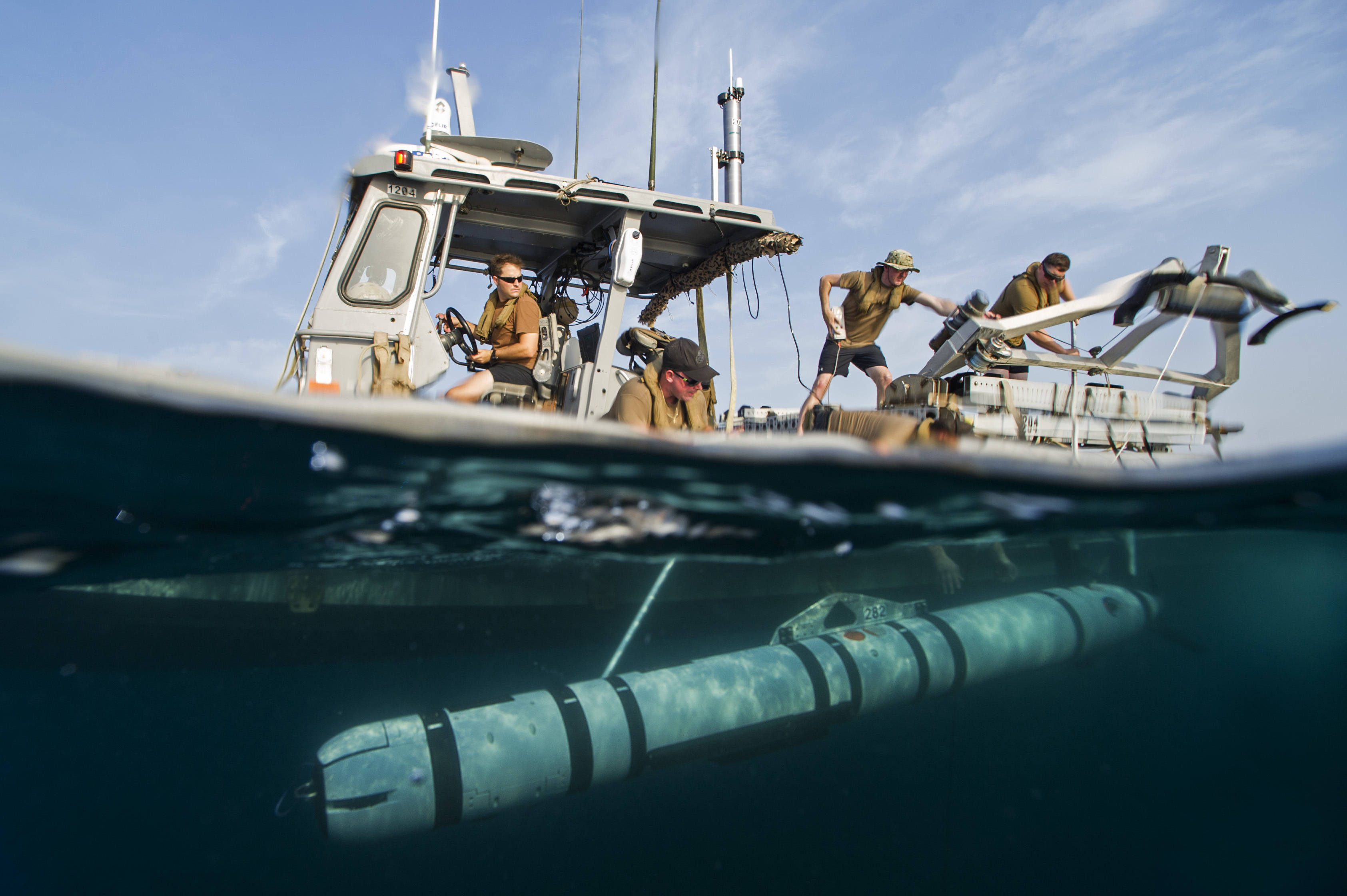
For those systems that are through testing, Moton said the Navy is looking for more opportunities to test them on VOOs, not just LCSs, since the MCM divisions are still don’t have ships delivered and through their post-shakedown availabilities.
Later this month, “we’re going to take some of the systems, Knifefish, and we’re going to do some launch and recover and some ops testing off of the ESBs,” he said, adding that expeditionary sea base USNS Hershel “Woody” Williams (T-ESB-4) would conduct the testing.
Asked about efforts to get the fleet used to the new MCM gear that’s drastically different than legacy systems, Moton said, “we’re trying: we use the fleet as much as we can, and the VOO opportunities are good and we’re doing things there. But also we just need to finish our testing and we need to deliver.”
To that end, he said UISS is doing well in its developmental testing. In a recent visit to San Diego, Moton said he watched launch and recovery integration testing aboard USS Independence (LCS-2).
MCM USV – the Navy’s new name for the Textron CUSV towing the Q-20 sonar – is also doing well and will begin its testing in FY 2020.
Moton again noted the need to “focus on job number-one here, which is to finish getting through fielding.”
Anti-Submarine Warfare Mission Package
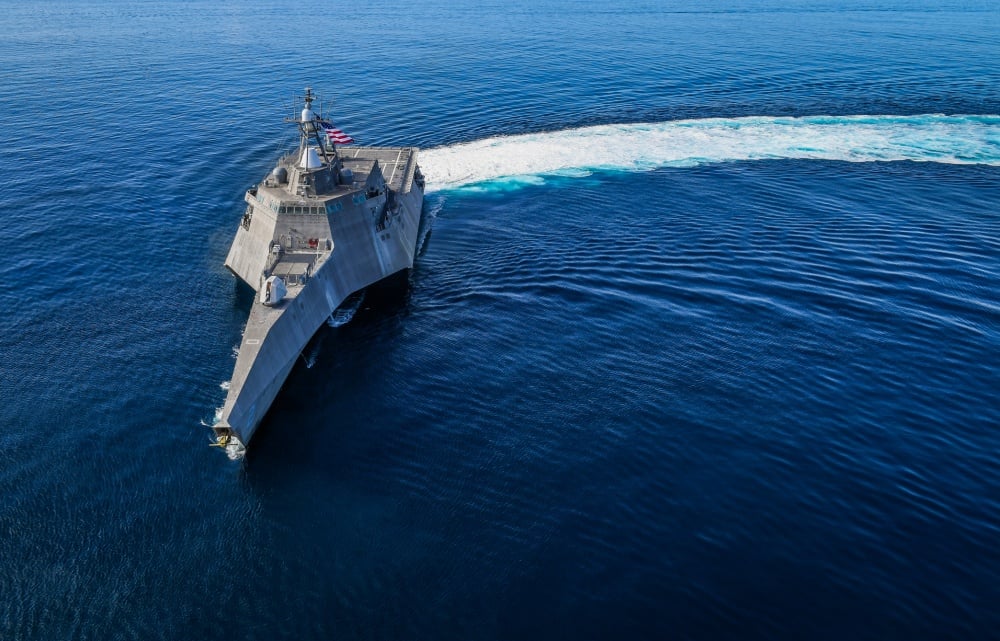
The sub-hunting package includes a variable-depth sonar and a multi-function towed array for active and passive listening.
USS Fort Worth (LCS-3) is undergoing modifications now to accommodate the towed systems – chiefly, a hole in the stern door to allow for VDS operations – and will begin developmental testing in the coming months, followed by operational testing.
Unlike the MCM mission package, there’s less appetite to try to get the gear on VOOs to help build up crew familiarity with the gear – MFTA already being fielded, but VDS being new to the Navy.
“ASW is the harder one; because of the nature of the ship mods, the concept of doing ASW on a vessel of opportunity – I don’t want to say that that’s not something we would look at, because it’s still a modular package, but it’s probably harder,” Moton said.





